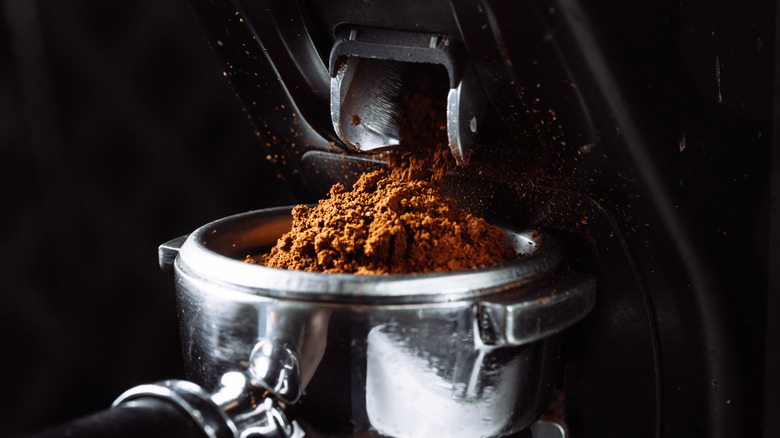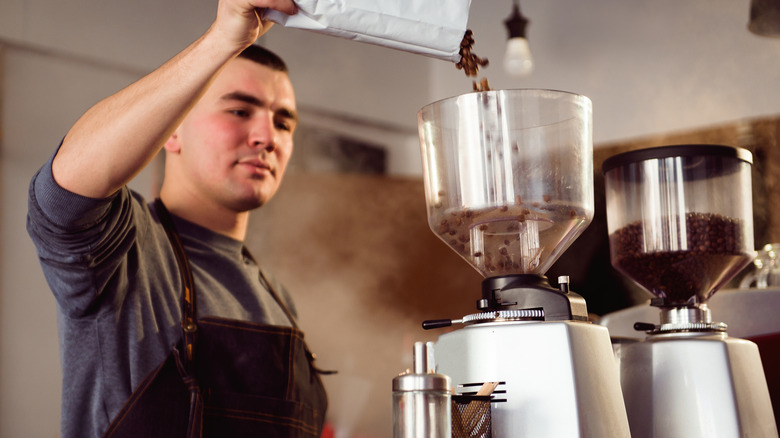Why A Timed Coffee Grinder Won't Yield The Best Results
When it comes to coffee, it is said that there is never a definitive answer to the best method of brewing coffee, as it all comes down to a matter of taste. There's your grandpa who's been drinking nothing but cup after cup of strong, dark Folgers his entire life. Then, there's your café loving cousin who can tell you exactly what mountain in Colombia the medium roast she's grinding for your afternoon pour-over came from. Yet, when it comes to espresso, specific measurements, equations, and science come into play. And it all starts with the grind.
Corberosa Coffee explains that the grind for espresso should be akin to something like fine salt. For a standard, finished 32-gram espresso, you'll need 18 grams of ground coffee. That's a ratio of about 1-to-2. The key to achieving that ratio is to have a grinder that is going to give you a consistent amount of ground coffee whenever it is called upon for service.
There are two types of grinders in espresso making: timed and gravimetric, or grind-by-weight. Timed grinders, according to Voltage Coffee, are what you'll find in the vast majority of coffee shops. These grinders operate based on the estimated amount of seconds needed to produce the desired grind weight. Where the SCA (Specialty Coffee Association of America) sets all of its standards based on weight, using a grinder controlled by time may not yield the best results.
Variables vs. consistency
The chief problem with timed grinders is inconsistency. Inconsistency in the grind could be the result of multiple factors, including the art of estimating the time it will take to grind the beans to the right consistency. Remember, espresso grinds are like fine table salt, so the time it takes for light roast beans to grind to that level is much different than for dark roast beans. Bean volume is another variable that could affect grind time. According to Perfect Daily Grind, if the bean hopper is full, the weight of the coffee will push more beans into the grinding chamber, leading to a far faster grind than when the hopper is closer to empty.
Gravimetric grinders, on the other hand, are set based on weight as opposed to time. Voltage Coffee notes that the brand uses adjustable, built-in scales that weigh the desired output and grind it to the required consistency. Using gravimetric grinders is often more efficient, as there is no need to adjust time settings. This leads to more consistent results and less of a hassle for baristas. Gravimetric grinders are also not nearly as susceptible to changes in volume or bean type. Overall, baristas want to ensure consistency in their espresso from cup to cup. A gravimetric grinder is going to get a lot closer to achieving that consistency than having to fuss around with time.

